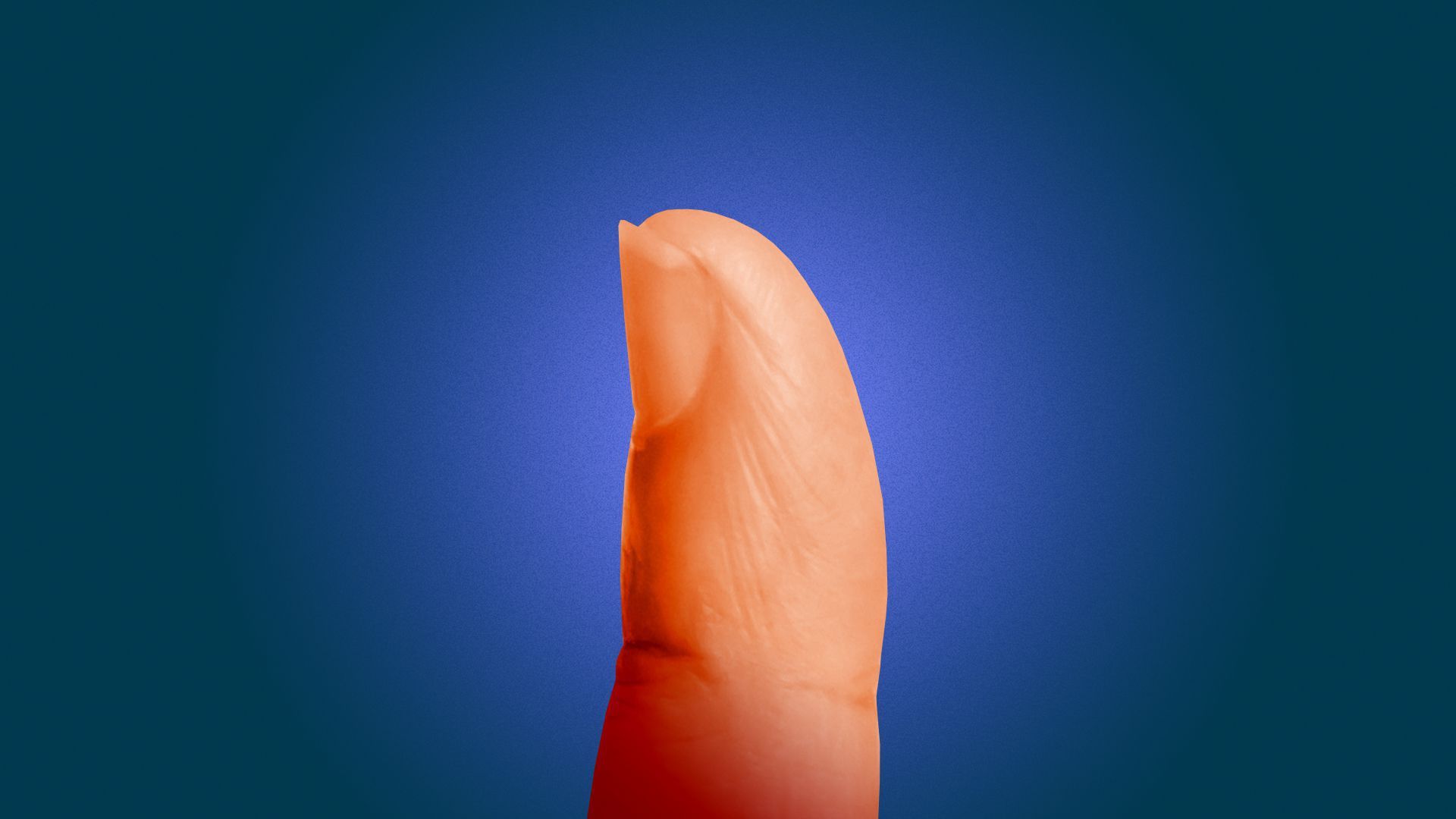
Illustration: Annelise Capossela/Axios
A European company is pioneering a bloodless way for people with diabetes to monitor their glucose levels.
Why it matters: More than 5% of the global population is affected by diabetes, and the number is set to keep rising. A more seamless monitoring system would make it easier for people with diabetes to manage their conditions and avoid disastrous health outcomes.
How it works: DiaMonTech is developing machines that use lasers and an optical lens to read glucose levels through the skin photothermally.
- A user places his finger on the lens for a few seconds, and "wavelengths from the infrared laser are selectively absorbed by the glucose molecules in skin and we detect the small amount of heat that is caused by the absorption," says Thorsten Lubinski, DiaMonTech's CEO.
- A proprietary algorithm is able to convert those readings into glucose levels.
Background: People with diabetes suffer from problems managing blood sugar levels that stem from their inability or inefficiency of their bodies to produce the glucose-regulating hormone insulin.
- To combat the disease, they need to frequently monitor their glucose levels to indicate when they have to take insulin or increase their sugar levels.
- The conventional method involves pricking a finger, sometimes several times a day, to produce blood that can be tested.
- More advanced continuous monitoring systems reduce or virtually eliminate the need for finger pricking but still require an injected sensor.
What to watch: DiaMonTech has developed a lab-based version of its system that has been certified for medical use in clinics in Europe, and is working on a hand-held device for personal use that Lubinski believes could be ready by 2022.
- Researchers are also working on a fully functional "artificial pancreas" that could seamlessly monitor glucose levels and dispense insulin as needed, but such devices are still likely years away.
